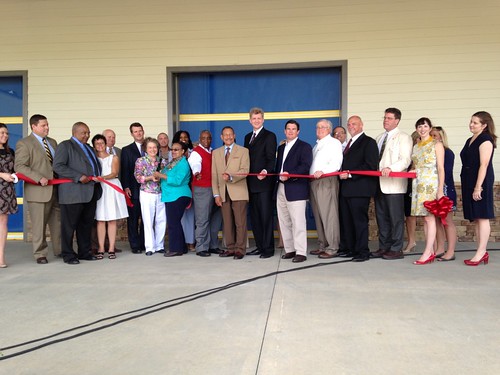
Across the country, food banks are committed to providing healthy food for those in need. Food banks also have a vested interest in building stronger local economies and creating additional opportunities for the communities they serve.
There are currently more than 200 food banks in the country, with more than 63,000 affiliated agencies like (food pantries and shelters). This network distributes more than 2.5 billion pounds of food to needy Americans each year.
Strategic integration of local foods into a food bank's operation is one way to create economic opportunities for farmers and provide fresh food to families and children. This is especially important in rural areas, which have rich agricultural assets but tend to experience higher poverty rates than metropolitan areas.
Second Harvest of South Georgia is the state's largest rural food bank, serving 30 Georgia counties. More than 90 percent of its service area has experienced high poverty in recent years. Last month, Second Harvest opened a new 65,000 square-foot regional distribution center in Thomasville, Georgia. Financed through a $5.2 million Community Facilities loan from USDA Rural Development, the new center includes a commercial kitchen and an indoor/outdoor marketplace. It also triples the organization's storage capacity to a total of 5 million pounds of food.
Second Harvest is also positioning itself to become one of the country's more than 300 food hubs, which aggregate and distribute local foods. As a food hub, Second Harvest will help open up new markets for farmers and increase availability of local foods. A weekend farmers market will connect farmers directly to consumers, who can buy fresh, local produce on site. Second Harvest's market will join 4,000 other ones nationwide that accept SNAP (Supplemental Nutrition Assistance Program benefits, formerly called food stamps).
Education is key to Second Harvest's efforts. Children and adults can get their hands dirty learning about gardening at its onsite "Food Forest." Nutrition classes will teach kids about the importance of fruits and vegetables for a healthy diet.
Food banks that provide marketing assistance, storage, aggregation, and distribution services are popping up all over the country. For example, New York's Foodlink and Food Bank of North Alabama are integrating local food into their service programs and product mix. Turning food pantries into local food hubs is a win-win for producers and consumers that is helping rebuild local economies.
You can learn more about USDA investment opportunities for food banks and food pantries through USDA's Know Your Farmer, Know Your Food Initiative.

